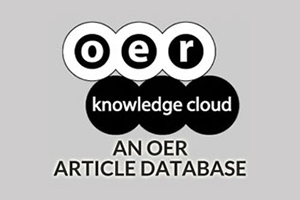How Are We Doing with Open Education Practice Initiatives? Applying an Institutional Self-Assessment Tool in Five Higher Education Institutions
DOI:
https://doi.org/10.19173/irrodl.v22i4.5745Keywords:
open education practices, self-assessment tool, institutional initiatives, blended learning, institutional transformationAbstract
This collaborative self-study examines how five higher education institutions in British Columbia (BC), Canada, have achieved momentum with openness and are implementing and sustaining their efforts. A goal of this research was to see whether an institutional self-assessment tool—adapted from blended learning and institutional transformation research—can help to assess how an institution has progressed with its open education initiatives. By adopting both an appreciative and a critical approach, the researchers at these five BC institutions compared the similarities and differences between their institutional approaches and the evolution of their initiatives. The paper includes discussion of how a self-assessment tool for institutional open education practices (OEP) can be applied to OEP initiatives at an institutional level and shares promising practices and insights that emerge from this research.
References
Baker, A., & Ippoliti C. (2018). Student-driven OER: Championing the student voice in campus-wide efforts. In A. Wesolek, J. Lashley & A. Langley (Eds.), OER: A Field Guide for Academic Librarians (pp. 239–252). Pacific University Press.
Bazeley, P. (2013). Qualitative data analysis: Practical strategies. Sage.
Coolidge, A., & DeMarte, D. (2016). OER policy development tool. https://policy.lumenlearning.com/
Cox, G., & Trotter, H. (2016). Institutional culture and OER policy: How structure, culture, and agency mediate OER policy potential in South African Universities. International Review of Research in Open and Distance Learning, 17(5), 147–164. https://doi.org/10.19173/irrodl.v17i5.2523
Creswell, J. (2007). Qualitative inquiry & research design: Choosing among five approaches (2nd ed.). Sage Publications.
Cronin, C. (2017). Openness and praxis: Exploring the use of open educational practices in higher education. The International Review of Research in Open and Distributed Learning, 18(5). https://doi.org/10.19173/irrodl.v18i5.3096
Eckel, P. D., & Kezar, A. (2003). Key strategies for making new institutional sense: Ingredients to higher education transformation. Higher Education Policy, 16(1), 39–53. https://doi.org/10.1057/palgrave.hep.8300001
Friesen, N. (2009). Open educational resources: New possibilities for change and sustainability. The International Review of Research in Open and Distributede Learning, 10(5), 1-13. https://doi.org/10.19173/irrodl.v10i5.664
Garrison, D. R., & Vaughan, N. D. (2013). Institutional change and leadership associated with blended learning innovation: Two case studies. The Internet and Higher Education, 18, 24–28. https://doi.org/10.1016/j.iheduc.2012.09.001
Graham, C. R., Woodfield, W., & Harrison, J. B. (2013). A framework for institutional adoption and implementation of blended learning in higher education. The Internet and Higher Education, 18, 4–14. https://doi.org/10.1016/j.iheduc.2012.09.003
Griffiths, R., Mislevy, J., Wang, S., Ball, A., Shear, L., & Desrochers, D. (2020). OER at scale: The academic and economic outcomes of Achieving the Dream’s OER degree initiative. SRI International. https://www.achievingthedream.org/system/files_force/resources/atd_oer_at_scale_academic_economic_outcomes_feb_2020.pdf
Gutiérrez, K. D., Baquedano-López, P., & Tejeda, C. (1999). Rethinking diversity: Hybridity and hybrid language practices in the third space. Mind, Culture, and Activity, 6(4), 286–303. https://doi.org/10.1080/10749039909524733
Hamilton, M. L., & Pinnegar, S. (2014). Intimate scholarship in research: An example from self-study of teaching and teacher education practices methodology. LEARNing Landscapes, 8(1). https://doi.org/10.36510/learnland.v8i1.680
Hannon, J., Huggard, S., Orchard, A., & Stone, N. (2014). OER in practice: Organisational change by bootstrapping. RUSC: Universities and Knowledge Society Journal, 11(3), 134. https://doi.org/10.7238/rusc.v11i3.2131
Inamorato dos Santos, A. (2019). Practical guidelines on open education for academics: Modernising higher education via open educational practices (No. JRC115663). Publications Office of the European Union. https://doi.org/10.2760/55923
Inamorato dos Santos, A., Punie, Y., & Castaño-Muñoz, J. (2016) Opening up education: A support framework for higher education institutions. JRC Science for Policy Report, EUR 27938 EN. Doi:10.2791/293408
Kezar, A. (2012). Bottom-up/Top-down leadership: Contradiction or hidden phenomenon. The Journal of Higher Education, 83(5), 725–760. https://doi.org/10.1353/jhe.2012.003
Kezar, A., & Eckel, P. D. (2002). The effect of institutional culture on change strategies in higher education: Universal principles or culturally responsive concepts? The Journal of Higher Education, 73(4), 435–460. https://doi.org/10.1080/00221546.2002.11777159
LaBoskey, V. K. (2004). The methodology of self-study and its theoretical underpinnings. In J. J. Loughran, M. L. Hamilton, V. L. LaBoskey, & T. Russell (Eds.), International handbook of self-study of teaching and teacher education practices (pp. 817–870). Kluwer.
Lim, C. P., & Wang, L. (2017). Blended learning for quality higher education: Selected case studies on implementation from Asia-Pacific. UNESCO. https://bangkok.unesco.org/content/blended-learning-quality-higher-education-selected-case-studies-implementation-asia-pacific
Lim, C. P., Wang, T., & Graham, C. (2019). Driving, sustaining and scaling up blended learning practices in higher education institutions: A proposed framework. Innovation and Education, 1(1), 1-12. https://doi.org/10.1186/s42862-019-0002-0
Louie, B., Drevdahl, D., Purdy, J., & Stackman, R. (2003). Advancing the scholarship of teaching through collaborative self-study. The Journal of Higher Education, 74(2), 150-171. http://www.jstor.org/stable/3648253
Ministry of Advanced Education, Skills and Training (2019). Full-time equivalent enrolments at B.C. public post-secondary institutions. Data Catalogue, Government of British Columbia. https://catalogue.data.gov.bc.ca/dataset/full-time-equivalent-enrolments-at-b-c-public-post-secondary-institutions
Oldenburg, R. (1999) The great good place: Cafes, coffee shops, bookstores, bars, hair salons and other hangouts at the heart of a community (2nd ed.). Marlowe & Company.
Patton, M. (2002). Qualitative research and evaluation methods (3rd ed.). Sage.
Peterson, M., & Spencer, M. (1991). Understanding academic culture and climate. In M. Peterson (Ed.), ASHE reader on organization and governance (pp. 140–155). Simon & Schuster.
Pinnegar, S., & Hamilton, M. L. (2009). Self-study of practice as a genre of qualitative research: Theory, methodology, and practice (Vol. 8). Springer Science & Business Media.
Rolfe, V. (2012). Open educational resources: Staff attitudes and awareness. Research in Learning Technology, 20(1). https://doi.org/10.3402/rlt.v20i0.14395
Skidmore, J., & Provida, M. (2019). A place for policy: The role of policy in supporting open educational resources and practices at Ontario’s colleges and universities [Research report]. Ecampus Ontario. https://www.ecampusontario.ca/wp-content/uploads/2019/08/2019-08-07-skimore-oe-policy-report.pdf
Social Sciences Feminist Network Research Interest Group (SSFN-RIG). (2017). The burden of invisible work in academia: Social inequalities and time use in five university departments. Humboldt Journal of Social Relations, 1(39), 18. https://digitalcommons.humboldt.edu/hjsr/vol1/iss39/21/
Spilovoy, T., Seaman, J., & Nate, R. (2020). The impact of OER initiatives on faculty selection of classroom materials. Bay View Analytics. https://onlinelearningsurvey.com/reports/impactofoerinitiatives.pdf
Taylor, J. A., & Newton, D. (2013). Beyond blended learning: A case study of institutional change at an Australian regional university. The Internet and Higher Education, 18, 54–60. https://doi.org/10.1016/j.iheduc.2012.10.003
Watters, A. (2018, May 4). Invisible labor and digital utopias. http://hackeducation.com/2018/05/04/cuny-labor-open
Weller, M., Jordan, K., DeVries, I., & Rolfe, V. (2018). Mapping the open education landscape: Citation network analysis of historical open and distance education research. Open Praxis, 10(2), 109–126. https://doi.org/10.5944/openpraxis.10.2.822
Wiley, D. (2007). On the sustainability of open educational resource initiatives in higher education. OECD. http://www.oecd.org/education/ceri/38645447.pdf
Published
How to Cite
Issue
Section
License
This work is licensed under a Creative Commons Attribution 4.0 International Licence. The copyright of all content published in IRRODL is retained by the authors.
This copyright agreement and use license ensures, among other things, that an article will be as widely distributed as possible and that the article can be included in any scientific and/or scholarly archive.
You are free to
- Share — copy and redistribute the material in any medium or format
- Adapt — remix, transform, and build upon the material for any purpose, even commercially.
The licensor cannot revoke these freedoms as long as you follow the license terms below:
- Attribution — You must give appropriate credit, provide a link to the license, and indicate if changes were made. You may do so in any reasonable manner, but not in any way that suggests the licensor endorses you or your use.
- No additional restrictions — You may not apply legal terms or technological measures that legally restrict others from doing anything the license permits.







